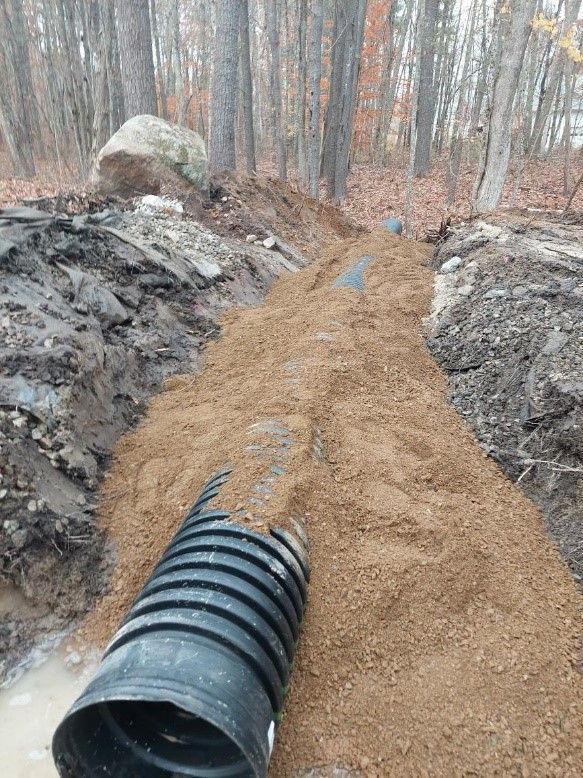Attain Success With Culvert Setup: Ideal Practices Exposed
Mounting culverts is an important element of infrastructure growth, requiring accuracy and adherence to best practices for long-lasting success. Whether taking on a brand-new job or keeping existing culverts, the procedure needs meticulous attention to information. From the first product choice to the last phases of upkeep, each action plays a vital function in the functionality and longevity of the culvert system. In this conversation, we will discover crucial techniques, pointers, and guidelines that can significantly affect the result of culvert installations. Understanding these key variables is vital in making certain the architectural stability and performance of culverts, making it important for experts and fanatics alike to grasp these foundational principles.
Proper Material Option

Plastic culverts are light-weight, corrosion-resistant, and affordable, making them a popular choice for numerous culvert installations. Inevitably, picking the correct product is crucial to make sure the culvert system works properly and has a lengthy service life (Road construction).
Site Prep Work Tips
Reliable site preparation is vital for the effective installation of culverts, guaranteeing appropriate assimilation with the surrounding atmosphere and long-term functionality. Prior to starting the setup procedure, it is crucial to carry out a thorough site evaluation to figure out the proper dimension, kind, and placement of the culvert.
Following, the soil conditions ought to be examined to evaluate the stability and load-bearing ability of the ground. Depending upon the dirt kind, extra steps such as compaction or reinforcement might be needed to stop settling or changing of the culvert gradually. Correct water drainage considerations need to additionally be taken into consideration to prevent water buildup around the culvert, which can cause disintegration or architectural damage.
Last but not least, establishing correct accessibility to the website for building and construction equipment and guaranteeing compliance with any type of regulatory demands are vital elements of site preparation. By complying with these site preparation tips, the installment of culverts can be carried out effectively and efficiently, promoting the long life and performance of the culvert system.
Installation Methods

To start with, it is essential to properly gauge and mark the area where the culvert will be set up. The trench view it now should be dug to the appropriate deepness and size, taking right into account the size and kind of culvert being installed.
Proper positioning is critical for the functionality and longevity of the culvert. By following these installation techniques faithfully, the culvert will be efficiently installed, adding to the total success of the project.
Maintenance Standards
After finishing the careful installment of culverts complying with correct techniques, adherence to maintenance standards is paramount to guarantee their durability and functionality. Regular evaluation is crucial to identify any indicators of wear, blockages, or architectural damages early on. Inspections must consist of examining for debris buildup, disintegration around the culvert sides, and any indications of deterioration or rust. Clearing particles, such as branches or leaves, from the inlet and outlet routinely is important to prevent clogs that could result in flooding.
In addition, keeping appropriate incline and alignment of the culvert is crucial for effective water circulation and to avoid potential obstructing. Road construction. Any kind of vegetation near the culvert must be managed to prevent root intrusion and clogs. In go now areas prone to freezing temperatures, executing winter maintenance practices such as making certain proper drain to protect against ice build-up is essential
Normal upkeep not only extends the life-span of culverts yet likewise ensures they work effectively in managing water flow, lowering the risk of damages to facilities and surrounding areas.
Troubleshooting Common Issues
Resolving usual issues that may arise with culverts needs a methodical method and mindful evaluation of the underlying reasons. By evaluating the culvert placement and incline frequently, prospective issues can be recognized and remedied without delay.

Conclusion
To conclude, accomplishing success with culvert installation needs cautious factor to consider of material option, comprehensive website prep work, proper setup techniques, and routine upkeep. By following finest practices and troubleshooting common concerns, the Pad Construction integrity and capability of culverts can be made certain. It is important to follow standards and referrals to avoid any potential problems and make sure the long life of the culvert system.